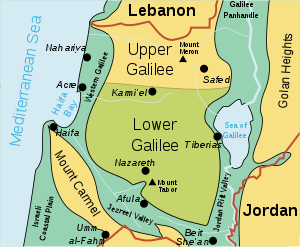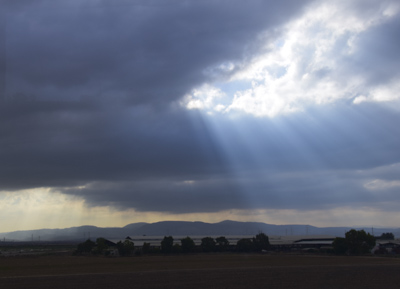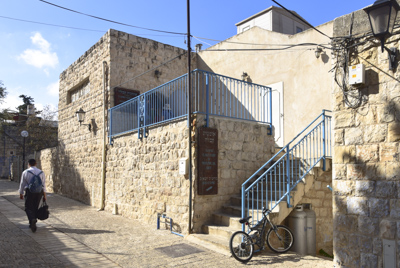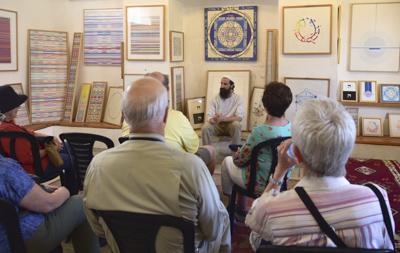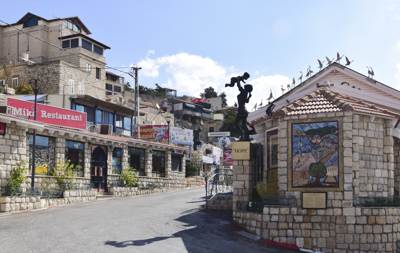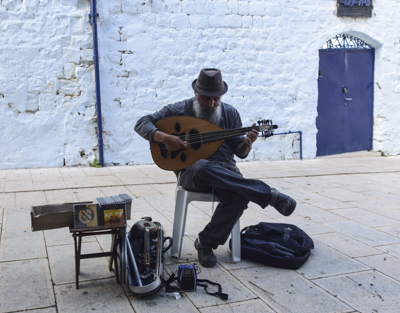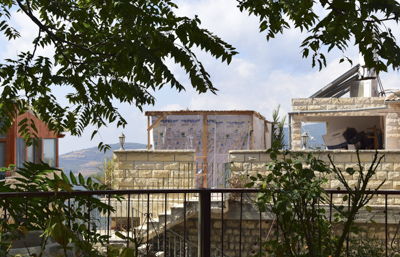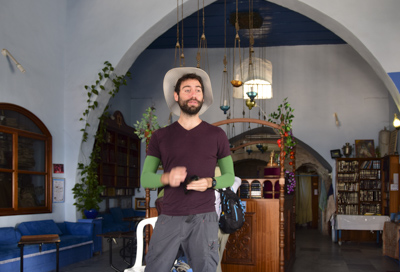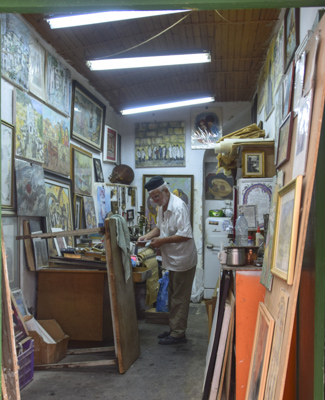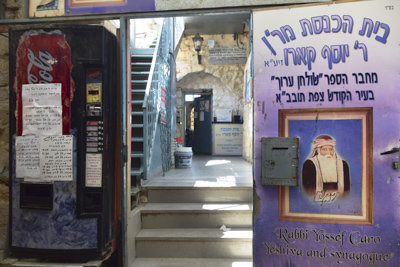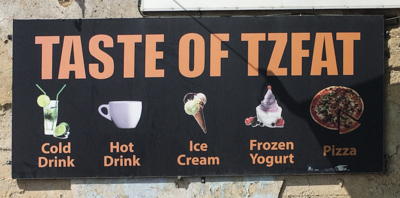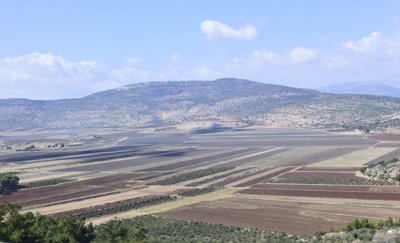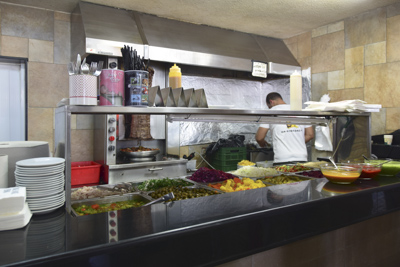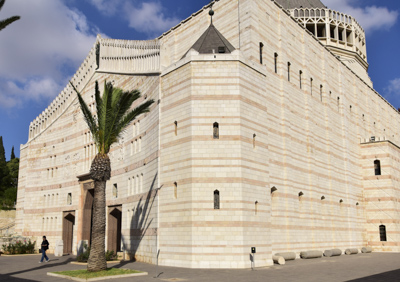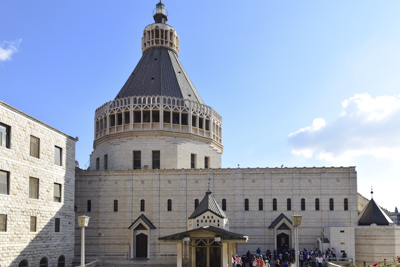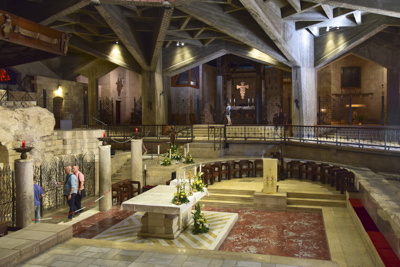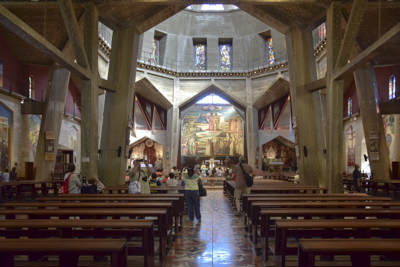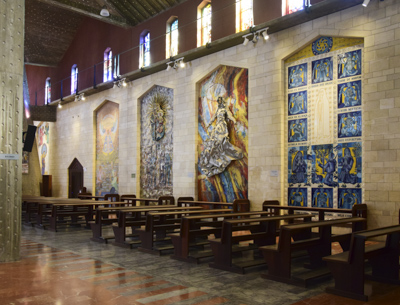Wednesday – October 4, 2017
It was overcast and 24 degrees Celsius this morning in the Israeli city of Haifa. I slept very well and peacefully at the lovely Bay Club Hotel. It’s a landmark building dating back to 1912.
After a tasty breakfast in the sunny enclosed patio, we boarded our tour bus for an hour’s ride northeast to the hill-top city of Safed, or in Hebrew: Tsfat. There was very little traffic because it was the first day of the holiday of Sukkoth, the “Festival of the Tabernacles,” and businesses and schools were closed. We drove through the northern part of Israel, near the Lebanese border, between the Sea of Galilee and the Mediterranean Sea.
With an elevation of almost 3,000 feet above sea level, Safed is the highest city in Israel. Tsfat is mentioned in the Jerusalem Talmud and is considered one Judaism’s Four Holy Cities, along with Hebron, Jerusalem, and Tiberias.
According to a legend, Safed was founded by a son of Noah after the great flood. The city has remained a center of Kabbalah and Jewish mysticism since the 16th century.
Safed/Tsfat was a pleasant city We entered the Tzfat Gallery of Mystical Art and met the artist, Avraham Loewenthal. We sat in his showroom and he spoke about the practice of Kabbalah and the influence on his artworks. Kabbalah is a school of thought that originated from Judaism.
Kabbalah seeks to define the nature of the universe, human beings, and the purpose of existence. It also presents methods to understanding and to eventually attain spiritual realization.
Historically, Kabbalah emerged from earlier forms of Jewish mysticism. Today, the Safed Rabbi, Isaac Luria is considered the father of contemporary Kabbalah. Safed was a pleasant city with rectangular stone houses stacked on the side of the hill. There were many art galleries, restaurants, and cafes for tourists.
We walked through the quiet streets, passing homes, small synagogues, and galleries. In a peaceful alleyway, a musician waited for us and played wonderful selections for us.
We saw many sukkah as we walked through the city. These are the temporary huts which families build near their homes and use during Sukkoth, the week-long festive holiday.
Some of the narrow alleyways in Tsfat reminded me of the medieval byways in historic French towns.
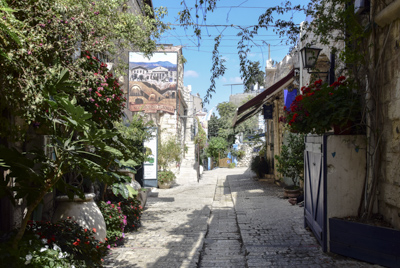
Our group stopped into one of the many tiny synagogues on an unmarked passageway. Alon Neeman, Rafi’s assistant, answered our questions and explained the history of the synagogue. The founders of this particular synagogue were Jewish people from Spain.

We continued to explore and entered “The International Center for Tzfat Kabbalah.” The plaque read that the center was “founded by the Jewish Federation of Palm Beach County Florida.” We saw an introductory film about Kabbalah and a leader provided more information and suggested we purchase some books.
We walked through a passageway filled with shops and galleries on our way back to our bus. I took some more photos and stopped for a cooling ice-cream.
We left Safed/Tzfat as the mid-day sun was warming up. We drove down the mountainside and looked across the beautiful fertile valley of the Galilee region.
It was time for lunch so Rafi suggested we stop at a gas station road-side restaurant which he knew. I have no idea about the name of the restaurant as typically many signs in Israel were written only in Hebrew.
We had a limited choice of kebabs or shawarma – the Middle Eastern sandwich on pita bread. We chose between chicken or lamb then picked veggies and topped it off with tahini sauce. Yummy. Everything was fresh and delicious and we enjoyed an outdoor picnic.
We drove to the city of Nazareth and the bus parked near the Basilica of the Annunciation. Tradition claims this site was the house of Virgin Mary and the site where the angel Gabriel appeared to her and announce she would bear the Son of God.
We were surprised to see a modern two-story church which was constructed in 1969. The new Basilica was designed by the Italian architect Giovanni Muzio and was an unusual design for a church.
Inside, down central stairs, the lower level of the church contains the Grotto of the Annunciation.
The first shrine was built there in the 4th century and was a simple altar in the cave in which Mary had lived. A second church was built on this site during the Crusades in 1102.
The main level comprises a large open space with the apse with altar and pews for worshipers.
Magnificent large mosaics donated by many foreign countries lined the interior walls of the church.
Near the Basilica of the Annunciation, there was St. Joseph’s Church which was a lovely small Franciscan church. It was built in 1914 over the remains of much older churches.
We returned to the Haifa Bay Hotel to relax and we noticed they had built a Sukkah hut near the dining room. Rafi gave us craft-paper and we had fun making paper-chain decorations for the Sukkah. Our Sukkah looked beautiful!

I had another amazing day full of stimulating experiences and thought-provoking ideas.

